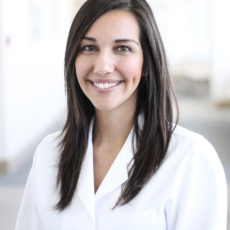Skin Cancer Screening in Los Angeles

Overview
What are Skin Cancer Screenings?
A skin cancer screening is a visual exam that checks the skin for moles, birthmarks or other spots with an unusual color, size, shape or texture.
Your dermatologist may use a dermatoscope, a handheld device that shows an area of skin magnified up to 10 times and includes a special polarizing LED light. Between the LED and the magnification, your doctor can see more deeply and vividly variations in pigment and examine the borders of lesions.
Why
Why screen for skin cancer?
Skin cancer is a growing problem among people of all ages. Each year in the United States, millions are diagnosed with melanoma, squamous cell carcinoma and basal cell carcinoma, and over 3 million people are diagnosed with actinic keratosis (pre-skin cancer). These are all potentially life-threatening skin cancers if left untreated.
The Skin Cancer Foundation recommends that you have a professional skin cancer screening by your dermatologist at least every 12 months. The good news is that with monthly self-screenings and annual visits to your dermatologist, your doctor can catch most skin cancers early and quickly treat them. Your yearly in-office skin screening with your dermatologist can truly mean the difference between life and death.
Our Saint John’s Physician Partners dermatologists use the most advanced screening equipment, the dermatoscope, during your examination. The benefits of a dermatoscope exam include:
- Non-invasive and painless
- A reduction in the need for tissue biopsies
- Fast and efficient (10 to 15 minutes)
- The ability to better differentiate benign lesions from cancerous lesions
- A significant improvement in accuracy related to skin cancer diagnoses
Early detection makes skin cancer easier and less costly to treat and offers better outcomes.
What to expect
What to Expect in Screenings
You will be given a hospital gown during a skin cancer screening and asked to undress down to your underwear. If you have spots on your genitals, you should also remove your underwear so the dermatologist can examine them. Once in the exam room, your doctor will ask you questions like:
- Have you noticed any new moles?
- Have any moles grown or changed color?
- Do you have any other concerns about your skin?
- Have you had skin cancer before?
- Have any of your family members had skin cancer before?
Your doctor will proceed to examine your skin from head to toe, looking for any areas of concern. They will pay special attention to your scalp, fingernails and toenails, between your toes, in skin folds and any place that is difficult for you to look at yourself. They may use a dermatoscope.

Prep
Preparing for Skin Cancer Screening
Before your appointment, make sure to do a self-exam and note any new moles, changing spots or unusual lesions. You may want to take photos of any areas of concern for reference.
You can also use a whole human body diagram to note the location of any spots you are concerned about front and back. This diagram will help you remember where they all are.
Before going to your appointment:
- Remove all nail polish so the doctor can thoroughly examine your fingers and toes.
- Wear your hair loose so the dermatologist can get a good look at your scalp.
- Remove your makeup if you are wearing makeup.
Specialists

